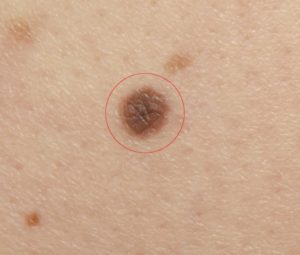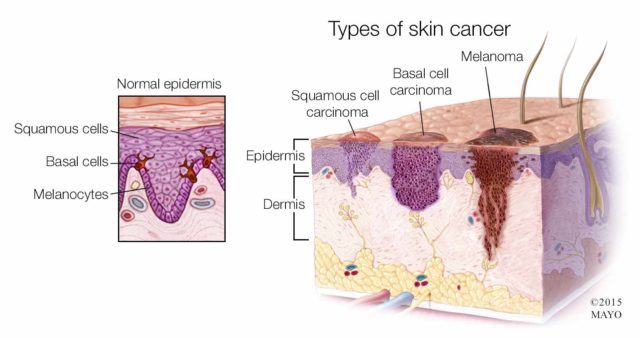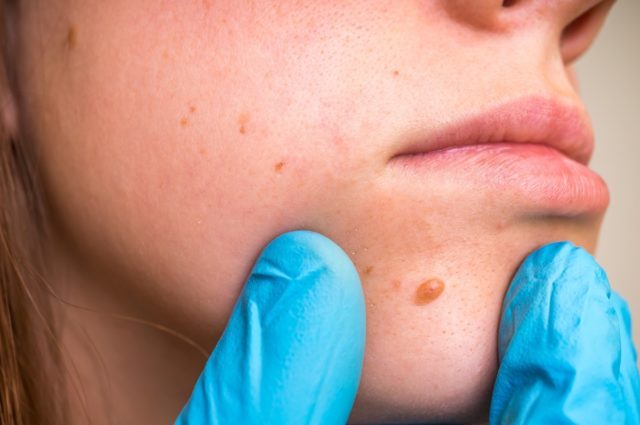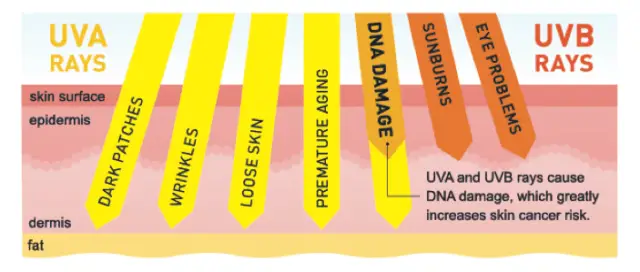If each of us did a monthly self-check, those killed by melanoma (skin cancer) would be reduced by 60%. We do not want to scare you but, if you read this report, it can help you in preventing which the key to health is…

If you found a strange spot or mole… Now what?
Ask your dermatologist to use a dermatoscope. That is a special kind of microscope that allows seeing inside a mole to determine if it is cancerous. This avoids unnecessary biopsies and reduces the risk of your doctor missing out a correct diagnose.
The ABCD and now the E of the problem

Several specialists claim that the ABCD helps you detect malignant moles. Now a new letter (E) has been added, to facilitate a diagnosis at an earlier stage. Here are the letters that can save your life… A: Asymmetry. Both sides of a mole should look the same.
B: Irregular edges. The edges of many melanomas are not even, usually have bulges.
C: Color and variation. Melanomas may have a different color of black, grayish, reddish, white, or even blue tones.
D: Diameter. You have a mole larger than the diameter of a pencil’s rubber. Schedule an appointment with a doctor for a review.
E: Evaluation, expansion, or lengthening. If a mole is small and begins to change quickly, you have to review it immediately.
Where does it attack?
Skin cancer can occur in any area. However, there are certain parts of the body that are more vulnerable than others. Discover what you should know about each of them.

Nose: 1 out of 3 cancer conditions occur here because it is an area very exposed to the sun.
Lips: 4% of skin cancers occur in the upper lip and a high number of them in a very small area. Protect your lips with a balm that has an SPF15.
Eyes: 1 out of 10 cancers of the skin occur around the eye, which makes the lenses more than a fashion trend.
Scalp and ears: People forget to protect those areas. They are where you can suffer more than 4% of skin cancers.
Chest, neck, and back of the shoulders: Since these areas are most exposed to the summer sun, women in this time of the year must take the precautions to avoid a higher incidence of cancer cells.
Hands: The back of the hands is where the most common signs of skin cancer appear, a phenomenon that is increasing.
Lower legs: Legs become the most common part where melanoma develops in women. Because they wear skirts and shorts and many times do not protect themselves with products that contain FP.
The palm of the hands, feet, and nails: It is not well known why, but African, Asian, and Latin women are more prone to developing melanoma on the soles of the feet, palms, and under the nails.
The tan’s big lie
For once -and for all- we will clarify it; there is no safe tan. The idea that a tan with low SPF (sun protection factor) is enough to prevent frying under the sun belongs to the past. 25 years ago it was believed that a tan with a low SPF offered some protection and this is not true. These have a maximum SPF of 4, which is insufficient to protect you from the damaging effects of the sun. Any change in the discoloration of your skin is already a sign of sun damage.
UVA vs UVB: Here is the difference
The UVA (ultraviolet long waves) rays mean aging. They penetrate deeply into the skin and cause wrinkles, spots, and cancer on the skin. The UVB (ultraviolet short waves) rays refer to burns that attack the surface of the skin. They both contribute to the development of cancer, in addition to being the cause of your skin becoming red or having a burning sensation.

A healthy day on the beach looks -and has to be- like this:
At 9 o´clock, apply a broad-spectrum sunscreen with an SPF 30, half an hour before going outside.
At half-past 9, when you go outdoors dress appropriately. Use long sleeves or more tightly woven clothing to protect the skin.
At 10, the sun begins to hit harder, do not hesitate to put on a big hat and glasses.
At 11, re-apply your sunscreen.
At 12, the sun is at its highest peak now, finds a place with shadow.
At 1 re-apply the sunscreen.
At 3 re-apply (by now you have understood the message; you need to apply your sunscreen at least every 2 hours).
At 5 o´clock use a cream with antioxidants to help the skin recover from any lightning that has passed through the sunscreen shield.
So it is up to you now to protect your skin and, thus, your overall health.

